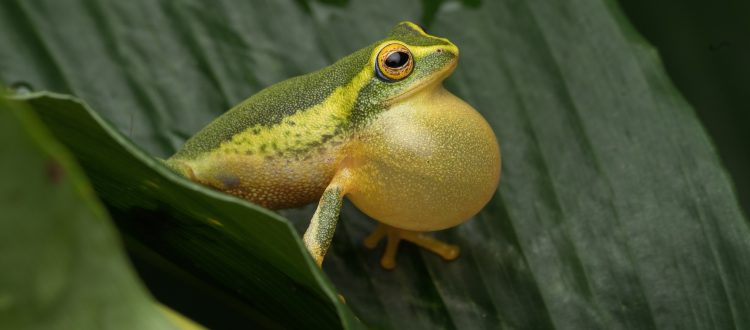Frogs Amidst Cardamom Plantations: Blessing or A Bane?
The Southwestern state of Kerala is also known as the land of spices. Throughout antiquity, numerous foreign nations were drawn to Kerala’s opulence, leading to the establishment of trade links with the region. Tracing its origins to 3000 BC, Muziris, an ancient port within the state, emerged as one of the epicentres of this worldwide spices trade network.
Today, Kerala is a primary producer of cardamom in the country, and its cultivation contributes significantly to the income of both farmers and the state, generating substantial profits. The high ranges of the Western Ghats offer the optimal climate and soil conditions for cultivating the ‘queen of spices’ in this region.
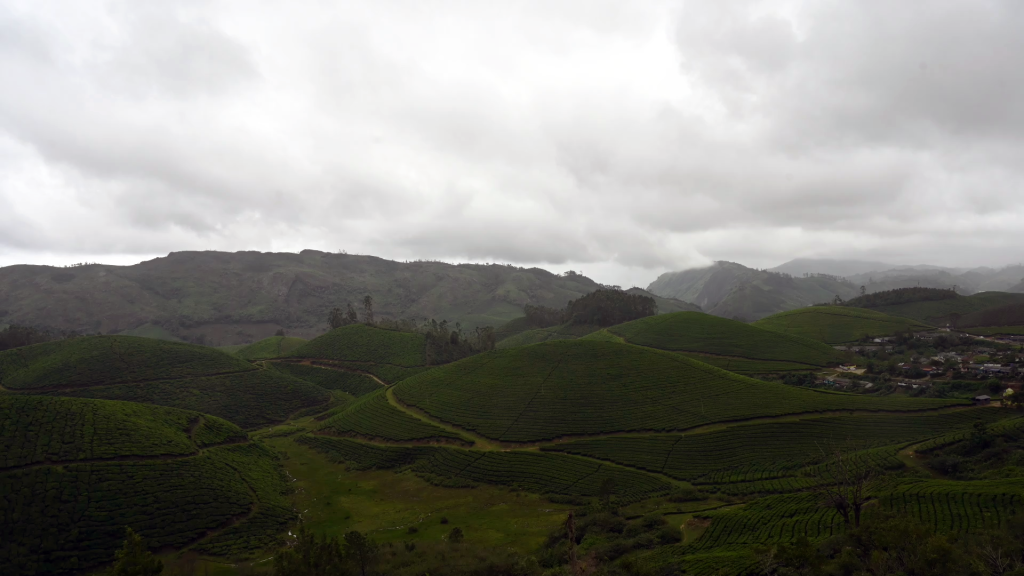
Wildlife Trust of India’s Amphibian Recovery Project in Munnar stands as a prime example of such a location. Given that cardamom plants thrive in shaded environments, these plantations are meticulously developed to minimise disruption to the flora, particularly trees, in contrast to other extensive cultivation methods. Additionally, the presence of numerous montane perennial streams and ponds used for irrigation creates a favorable habitat for frogs within these plantations.
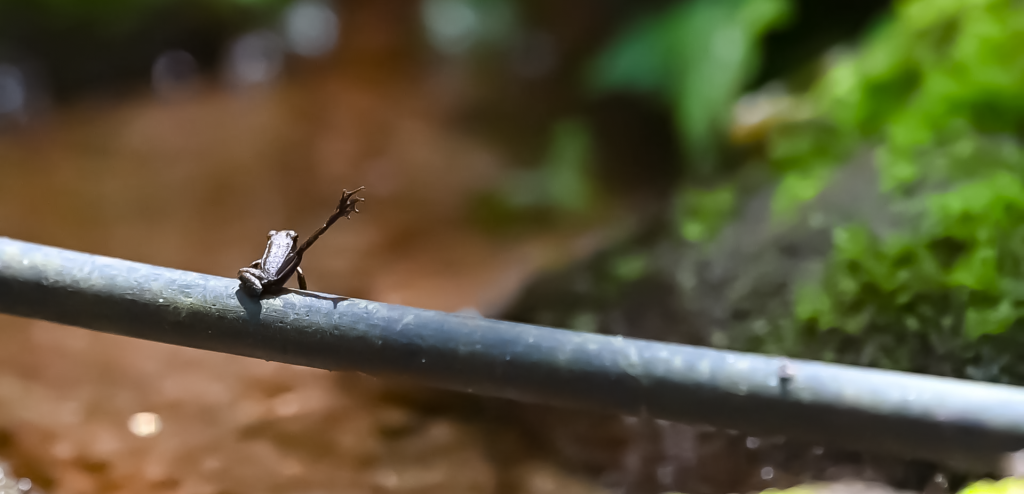
A dancing frog (Micrixalus adonis) found in the Western Ghats | Photo by Sreenanth K
WTI has been collaborating with selected cardamom estates in the region to enhance the habitat quality of the various frog species found in this area. During our work in this landscape, we have encountered a rather uncommon and unsettling belief held by the estate workers- frogs eat cardamom pods! As a result, workers resort to using sickles to eliminate the frogs whenever they approach these plants. The practice not only impacts the amphibian population within the cardamom plantations but also casts a negative influence on the perception of the conservation efforts we are engaged in. What was once considered a safe haven for numerous endangered amphibian species, is now a challenging environment due to this misconception.
‘Frogs Eat Cardamom’: Myth or Fact?
Our team started to investigate this problem and the initial step was to explore existing literature that discusses such behaviour. The sole published literature on this subject was authored by amphibian expert, Mr. Arun Kanagavel and his team which comprised our former project team member, Ms. Sethu Parvathy. Through their research, which involves analysing the stomach contents of frogs found within the cardamom plantations, they decisively debunked the myth that prevails among the plantation workers. The stomach contents they examined did not reveal any traces of cardamom pods, instead contained fragments of insect body parts. “’We found that everyone regardless of whether educated or not, believed in the myth that frogs eat cardamom. To think that frogs who were always considered the ‘friends of farmers’ are now accused of being pests and hence culled. “, Sethu Parvathy added.
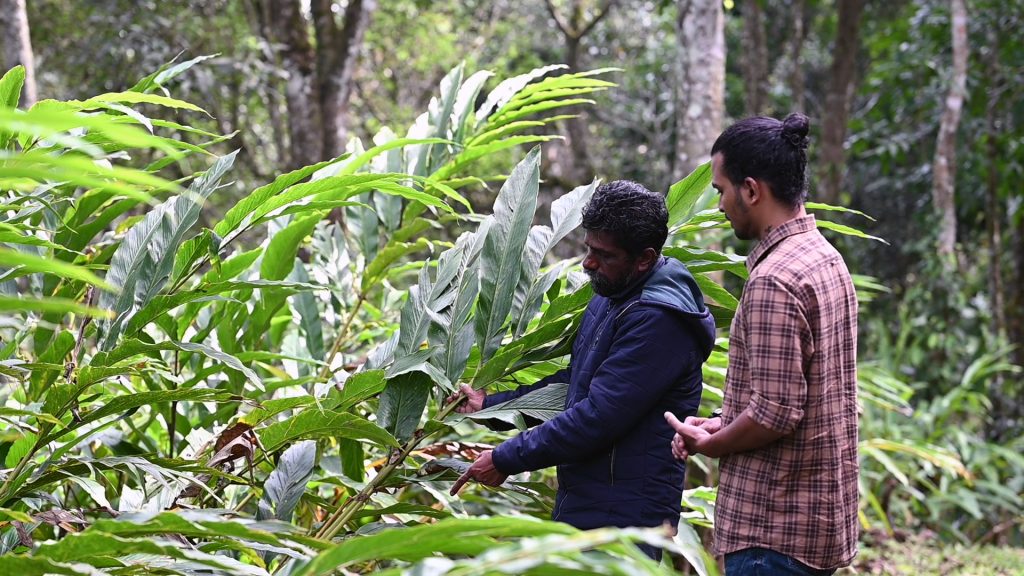
Dr. Muthuswami Murugan with Abhijith Vijay at the Cardamom Research Station | Photo by Sreenanth K
Our project team also reached out to Dr. Muthuswami Murugan, Head of Cardamom Research Station, Kerala Agricultural University who has been working for more than 20 years in the cardamom plantations. “Throughout my career, I’ve observed numerous plantation workers eliminating frogs that venture near the cardamom plants. However, it’s important to dispel this misconception. Frogs are naturally drawn to cardamom plants during their flowering and fruiting stages as they seek out insects, a crucial component of their diet. In fact, these insects can pose a potential threat to cardamom plants. By preying on them, frogs inadvertently assist the farmers by safeguarding the plants. Beyond this, frogs also contribute to a range of ecological services that benefit the ecosystem.” – Dr. Muthuswami Murugan.
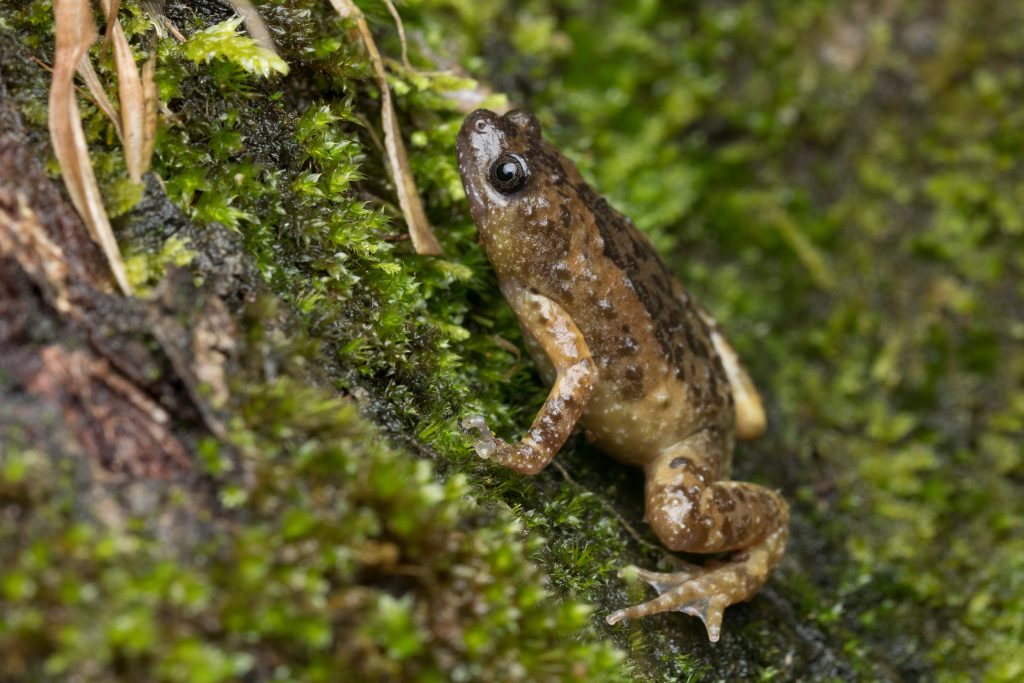
Montane dot frog (Uperodon montanus) | Photo by Abhijith Vijay
Reinstating Frogs as ‘Friends of Farmers’
Adult frogs are generally insectivorous or carnivorous animals, with a preference for insects as their primary food source. Although certain tadpoles might start out as herbivores during their early stages of development, their mouth structures undergo significant development during metamorphosis, allowing them to exclusively adopt a carnivorous diet. Scientific research clearly shows that without appropriate mouth adaptations, herbivory is not a feasible dietary option for frogs. Many endemic and threatened amphibian species are found inside these cardamom plantations.
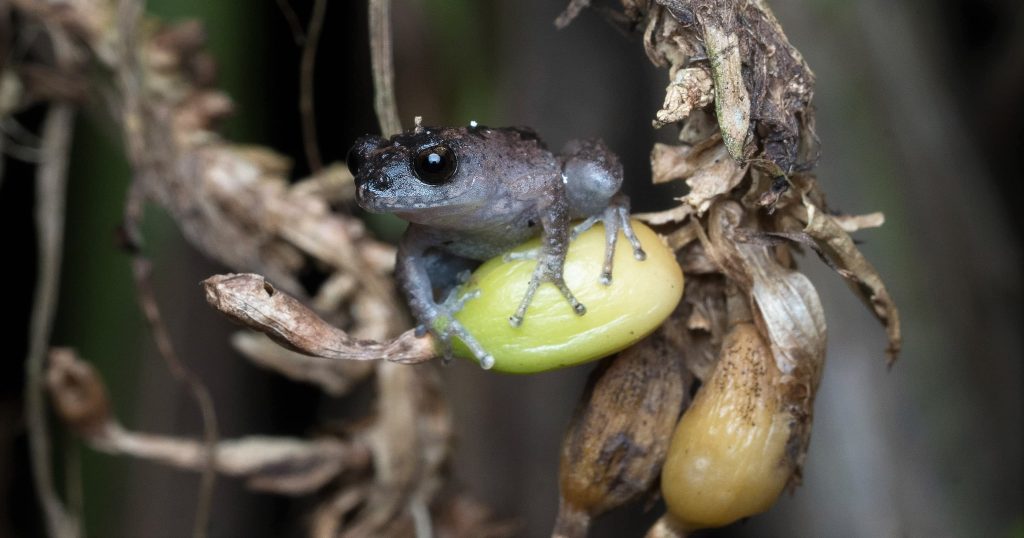
Griet bush frog (Raorchestes griet) found on a cardamom pod | Photo by Abhijith Vijay
The Anamalai flying frog (Rhacophorus pseudomalabaricus), Kalakkad gliding frog (Rhacophorus calcadensis), Large-ghats tree frog (Ghatixalus magnus), Beddome’s bush frog (Raorchestes beddomii), Sushil’s shrub frog (Raorchestes sushili), Griet bush frog (Raorchestes griet), Large Ponmudi bush frog (Raorchestes ponmudi), Jayaram’s bush frog (Raorchestes jayarami), Green-eyed bush frog (Raorchestes chlorosomma), Munnar bush frog (Raorchestes munnarensis), Mewing night frog (Nyctibatrachus poocha), Spinular night frog (Nyctibatrachus acanthodermis), Montane dot frog (Uperodon montanus), Common Indian toad (Duttaphrynus melanostictus), Sreeni’s golden-backed frog (Indosylvirana sreeni), Don’s golden-backed frog (Indosylvirana doni), Beautiful dancing frog (Micrixalus adonis), Indirana sp, Uraeotyphlus sp, Western tree frog (Polypedates occidentalis), etc. are some of the major amphibian species found in these plantation.
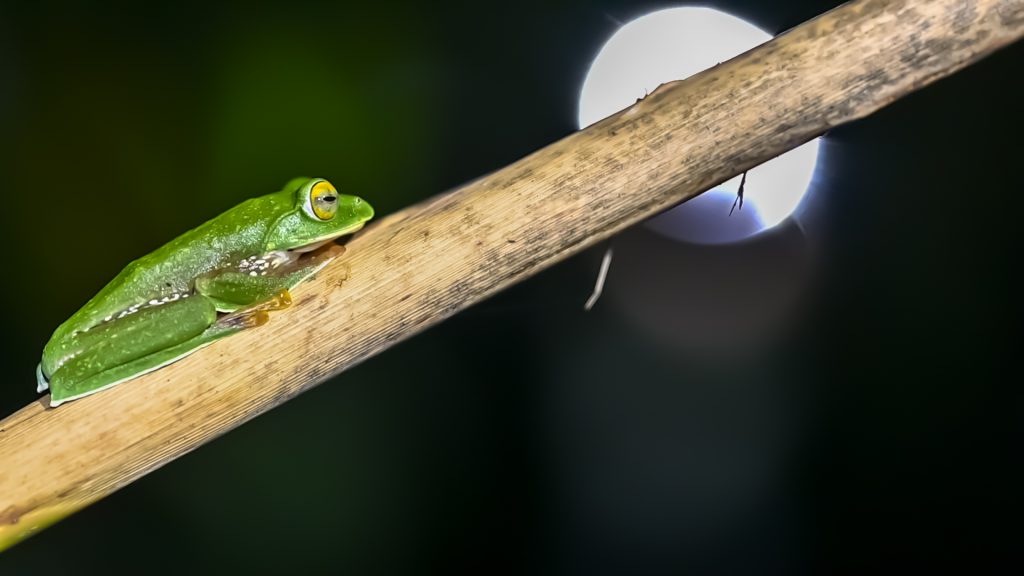
The Anamalai flying frog (Rhacophorus pseudomalabaricus) | Photo by Sreenanth K
Unfortunately, these species are experiencing a steady decline in their numbers and variety, largely due to factors such as climate change, habitat loss, and diseases. Therefore, it is imperative to address the conservation of frogs from detrimental management practices. Achieving this goal necessitates raising awareness and educating both workers and plantation owners about the positive significance of frogs. By realising that frogs are a blessing, not a bane, we can take effective steps toward their conservation.
Wildlife Trust of India’s Amphibian Recovery Project is supported by Synchronicity Earth and Stiftung Artenshutz
Abhijith Vijay is a biologist, traveler and photographer who is working as an Assistant Field Officer for Munnar Amphibian Recovery Project.

